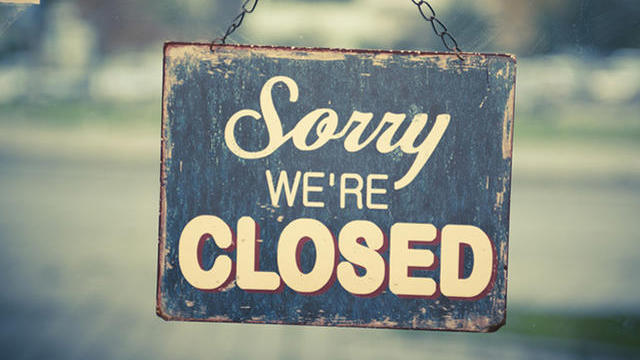COVID-19 exposed Brampton’s economic crisis. But what can we do about it?
Published November 27, 2020 at 10:17 pm

Recently, Brampton has had some of the highest COVID-19 case positivity rates in the country.
The northeast corner of Brampton has a case positivity rate of 19 per cent. This means that out of everyone who tests for COVID-19, 19 per cent of them are positive. Compare that to the provincial average at the time, which is just 3.7 per cent.
This, of course, invited criticism of Brampton. We may never truly know the real causes of community transmission because contact tracing in the Peel Region is nearly impossible.
The City of Brampton, like many other cities, failed the resiliency test imposed by COVID-19. To reiterate, there is no way to ascertain the specific cause (or more likely, combination of causes) that led to Brampton’s dire state, but it is no coincidence that communities which face the highest levels of financial burden and social strife are hit hardest by COVID-19, with poorest neighbourhoods worse off.
Brampton isn’t a poor city, but as Brampton MPP Gurratan Singh correctly points out, Brampton is a city of working class residents, many of whom cannot work from home. Well-being is an often ignored part of the healthcare discussion, and finances have a significant influence on well-being.
Brampton’s overwhelmingly working class population is one of the most financially stressed in the Greater Toronto Area. According to a piece in the Globe and Mail, 34 of the 100 most financially distressed neighbourhoods are in Brampton. It also has one of the highest rates of household indebtedness, with 80 per cent of homeowners still paying off their mortgage compared to 63 per cent across the Toronto region.
Brampton has grown at twice the rate of Toronto, but it also sees rising homelessness, particularly in the Downtown Brampton area.
The homeless are obviously at greater risk of transmitting and contracting COVID-19.
Also part of the conversation about Brampton’s high COVID-19 numbers is multiple-family households and illegal basement rentals. Between 2006 and 2011, multiple-family households increased by 34.7 per cent. Some community leaders misunderstand the problem, calling this a cultural preference. This racially motivated evasion misses a simple economic reality: massive population growth in Brampton is not being met by an adequate supply of affordable housing. Just because some South Asians are capable of living in tight quarters doesn’t mean they prefer to live this way. Once again, without contact tracing we cannot be sure whether overpopulated households are among the main culprits of COVID-19 transmission in Brampton, but it certainly makes the city less resilient to its spread.
While affordability has been a challenge in Brampton, it is often ignored by the city officials. The Brampton 2040 Vision is an aspirational document that describes the future of the city residents want.
Larry Beasely, credited for having created “Vancouverism” — a model of urban development that prioritizes high-rise residential towers and green space — was flown in to apply a similar urban design model to Brampton 2040. While I believe that the document envisions a progressive Brampton, the engagement process largely ignored the lesser educated, the impoverished, and the homeless. The future of Brampton in the eyes of city staff is unfortunately one of gentrification and condofication. It does not address the current inequities in Brampton. It, instead, pretends like they never existed. At best, Brampton 2040 thinking displaces working class Bramptonians to the fringes of the city (or out of the city entirely). At worst, it doubles down on the problem, forcing more families to squeeze into smaller homes and pushing more people into the streets, making us less resilient to pandemics.
Brampton is in dire straits and it feels as though every level of government has failed it, but there is a silver lining. The COVID-19 pandemic gives us the impetus to reprioritize. Brampton is diverse both in its ethnic and socioeconomic compositions, it is one of Canada’s youngest cities, and its working class population is industrious and entrepreneurial. There’s an opportunity to give residents the power to set the city’s priorities. But how do we do this?
For the answer to this question, we can look to other communities who are tackling similar problems.
Parkdale, a neighbourhood in Toronto, brought together its community in 2010 to address growing concerns over gentrification. The result of those initial meetings was a community land trust (CLT) established in 2014 called the Parkdale Neighbourhood Land Trust (PNLT).
CLTs are non-profit organizations made up of community members designed for community stewardship of land and property, protecting them from the speculative market. CLTs usually provide affordable housing for low- and middle-income community members. In October, PNLT partnered with the Vancity Community Investment Bank to acquire at-risk affordable rental buildings in Parkdale. CLTs employ a variety of innovative alternatives to traditional financing for homeownership, allowing community members to build equity without being priced out by investors or gentrification.
CLTs are not new. The United States has an extensive network of CLTs across the country. In Canada, CLTs have been around since the 1980s. Hamilton, a city with a similar industrial history to Brampton, has its own CLT which has been operating since 2014. Aside from building resilience to pandemics, CLTs also build resilience to economic downturns, with land trusts having a significantly lower foreclosure rate than the market.
Brampton does not need to follow in Mississauga and Toronto’s footsteps, with uninspired condominiums owned by an investor class with no community ties. It needs to embrace its identity as a working class city and provide amenities for its diverse residents.
The pandemic has demonstrated that the sickness in our communities came long before COVID-19. Brampton has a surplus of underutilized land and with about 32 per cent of Bramptonians reporting having a low sense of community belonging; it is in dire need of community ties. Imagine suburban neighbours bonding over how they would like community land to be used, making decisions democratically, and paving the way for aspiring homeowners to realize their goals free from financial burden.
The frustration with Brampton is legitimate, but let it not engender apathy. Let it instead inspire participation. The fate of Brampton has far too often been decided by people outside of the four corners.
Vijai Kumar is a freelance writer and economic policy researcher, working with organizations like the OECD and Indigenomics Institute. He is an engaged Bramptonian, lover of the arts, and impassioned advocate of community wealth. He enjoys a good burrito.
INsauga's Editorial Standards and Policies